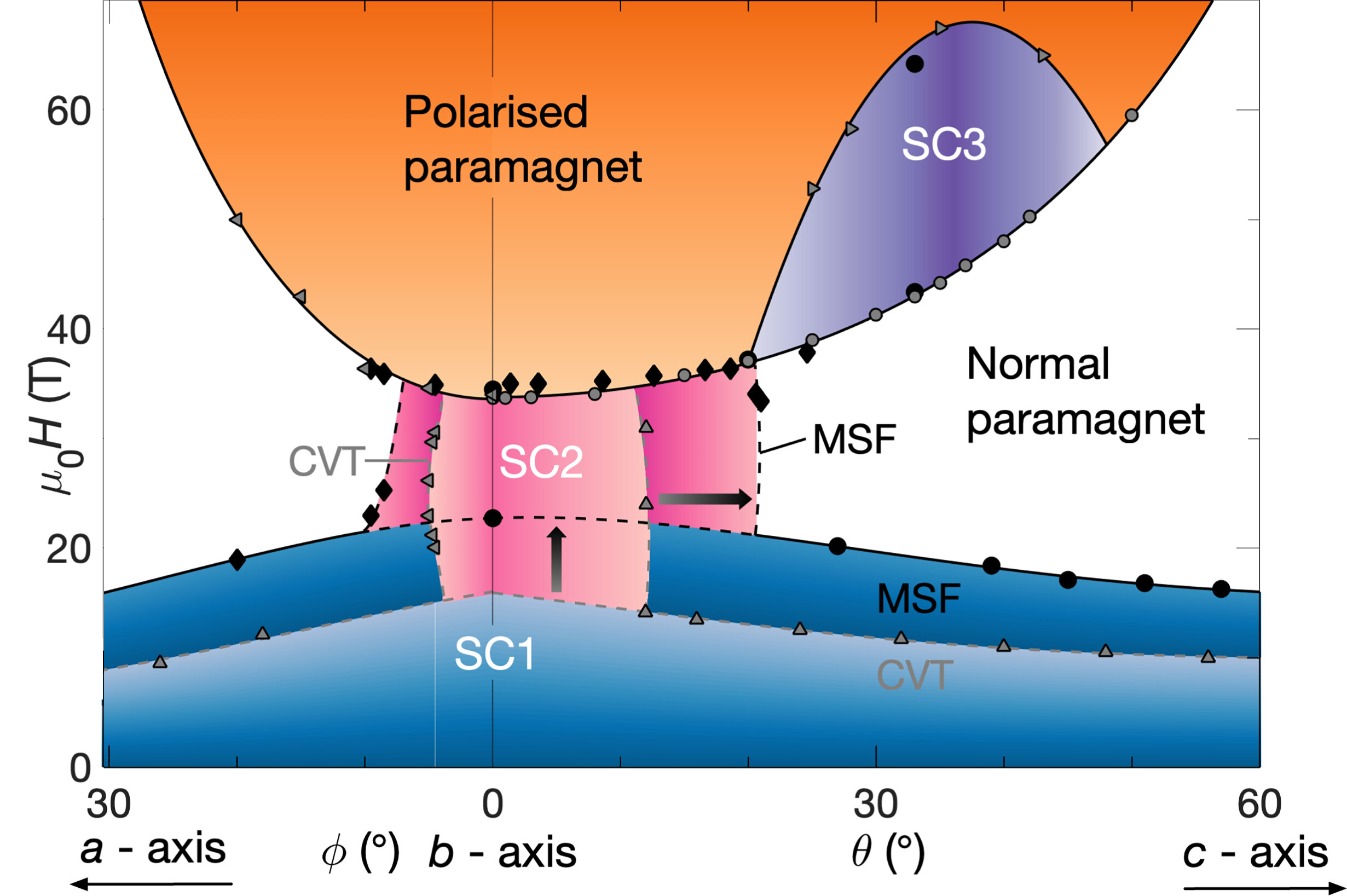
The unconventional superconductor UTe2 exhibits numerous signatures of spin-triplet superconductivity—a rare state of matter that could enable quantum computation protected against decoherence. UTe2 possesses a complex phase landscape, including two magnetic field-induced superconducting phases, a metamagnetic transition to a field-polarized state, and both pair-density and charge-density wave orders.
A recent paper published in Proceedings of the National Academy of Sciences reveals a significantly revised high magnetic field superconducting phase diagram in the ultraclean limit of single crystals. The study demonstrates a pronounced sensitivity of field-induced superconductivity to the presence of crystalline disorder. A theoretical model developed to describe the experimental results shows how critical magnetic fluctuations in high magnetic fields may drive a transition between two distinct spin-triplet superconducting phases in UTe2.
The high quality single crystals of UTe2 for this study were prepared by Dr. M. Vališka’s team at MGML using the molten salt flux (MSF) technique. The team used high-purity uranium metal, further refined through the solid-state electrotransport technique available in the MGML infrastructure. The pristine quality of the resulting single crystals is evidenced by their high critical temperature (Tc) values of up to 2.10 K, low residual resistivity down to 0.48 µΩ·cm, and the observation of magnetic quantum oscillations.
This large-scale collaboration benefited from dual access via the ISABEL project.
